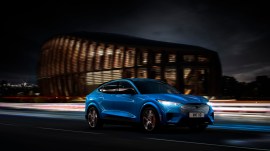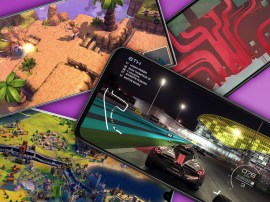Audi Q7 (2015) First Drive review
We float about the New Forest in the seven-seater luxury SUV that’s dripping with technology
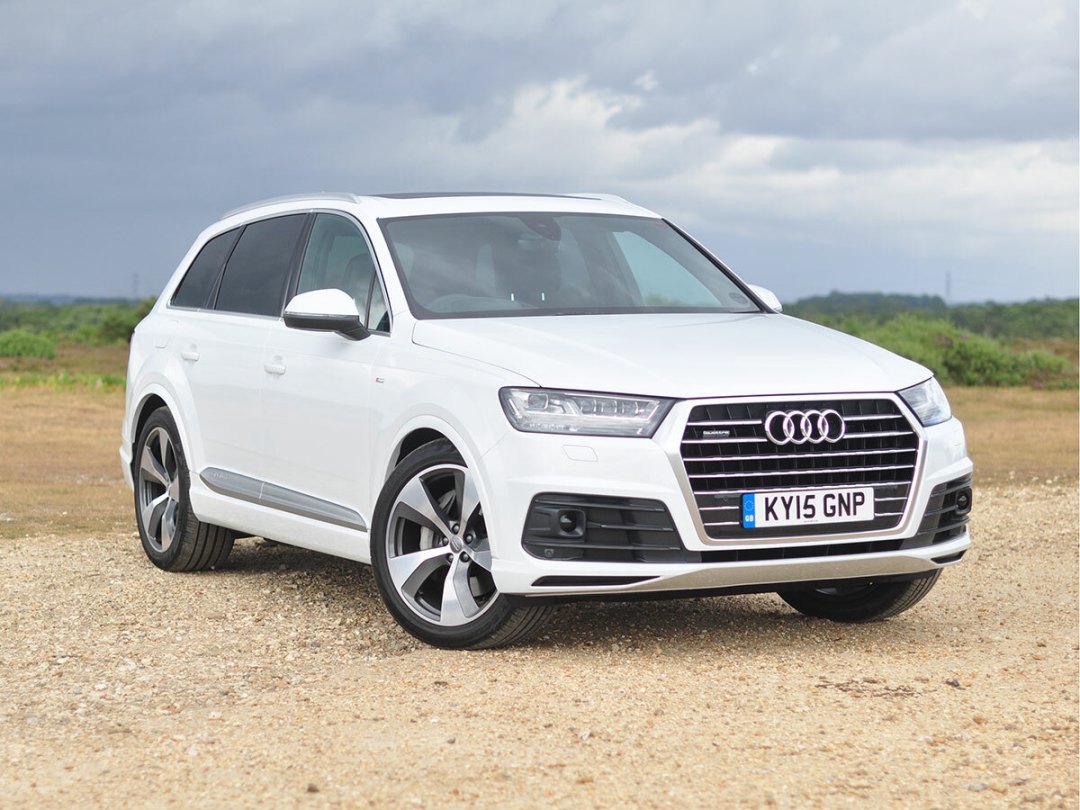
Suddenly, we’re all grown-ups.
We no longer crave cars so wedge-shaped they could be used as BMX ramps; from whose bucket seats you’re lucky if you can see the roof of an oncoming vehicle, let alone the road ahead. We want a commanding view of the road, the traffic, the local frog crossing and the bunting draped from the pollarded trees that flank the school run.
We’ve also never been so pampered. We’re not willing to over-extend our back muscles depositing children in the rear of a hot hatch. We want to reach out horizontally to swivelling MaxiCosis. We think our other kids deserve their own Alcantara leather seats and their own climate control. We want a car that’ll park itself, deal with boring things like traffic jams and integrate seamlessly with our chosen web services.
We’re the generation for whom the Audi Q7 and its premium SUV kin were birthed. As with the Range Rover Sport, BMW X5 and Volvo XC90, it’s designed to be a haven from the graft, filth and awkwardness of the outside world, replete with Oligarch-pleasing levels of luxe and every driver aid Audi could cram into it.
We had the chance to breeze around the New Forest in one for several hours, and by the end, normal life seemed pretty unpleasant.

The 2015 Q7 is a more aggressive and frowny-looking thing than its predecessor, and it wears its five-metre-by-two-metre frame well. There’s no escaping the imposing dash it cuts, but its new angles serve to shrink it while reducing drag. It doesn’t look quite as tank-like as a Porsche Cayenne or the older Q7, particularly in the S-Line guise we drove.
It’s less tank-like under the paintwork, too, shedding up to 325kg over its predecessor (240kg in 7-seater format) thanks largely to a new aluminium-and-steel composite body shell and aluminium doors. That gives it the best claimed power-to-weight ratio in its class: its 272ps, 3.0l TDI engine achieves 132ps/ton, as well as a combined mpg of 47.9 and emissions down to 153g/km. Audi claims it’ll achieve 0-60 in 6.5s, and keep going up to 145mph. That’s a speedy tank.

Inside, it’s the best of Audi: posh soft-touch plastics, leather so uniform and flawless it could be more posh soft-touch plastic and bands of aluminium framing an elegant dash layout. There’s space to spare, even with all seven seats engaged - Audi’s proud of the fact that every one bar the driver’s has ISOFIX to accommodate boosters. Seating seven grown-ups in comfort is entirely feasible, even with a few spaniels in the boot.
As well as the standard 8.3in non-touchscreen display that glides out above the central console, ours came equipped with Audi’s Virtual Cockpit, a 12.3in, 1440×540 screen that takes the place of the instrument cluster behind the steering wheel.
It’s bright, clear and adaptable: you can choose to have the speedo and rev counter up big and bold, or shrink them down to allow more space to see things such as mapping, DAB radio playback and music stored on the infotainment system’s hard disk.
Everything is controlled through jog wheels and buttons on the steering wheel; there’s a steep learning curve, but we’re sure you’d get to grips with it after a few drives. There’s an impressive optional head-up display, too, showing off navigation instructions and your speed vs the speed limit on the road you’re driving.
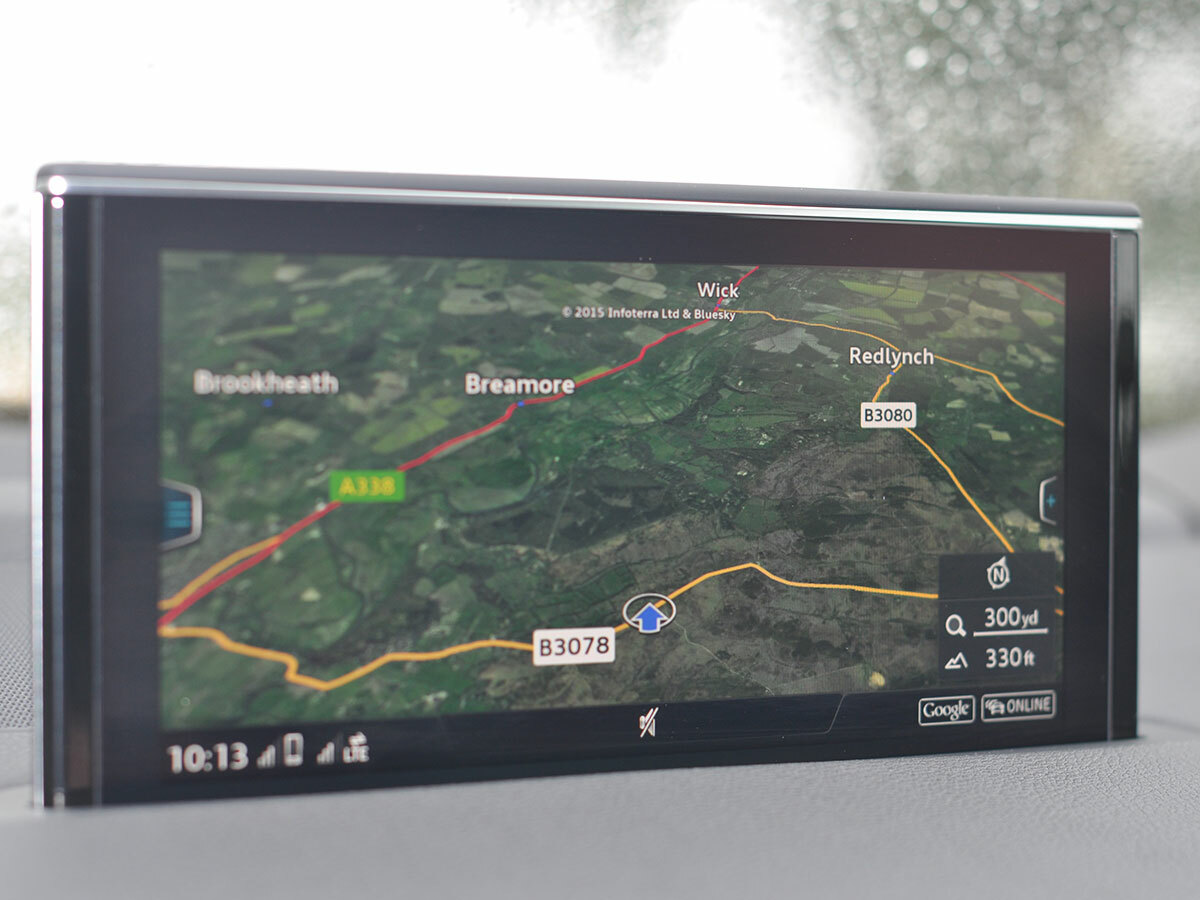
It’ll be interesting to see how the Virtual Cockpit ages as screen tech improves. Is a first-gen VC still going to look great in 10 years, like those retro LCD speedos in ’80s Citroens do now - or is it just going to look a bit out of date? Time will tell; right now it’s very, very cool.
The sat-nav uses data from Google Earth and Local Search, and offers live traffic from INRIX. Some data is stored, while live information is streamed via the car’s built-in LTE connection (which uses its own SIM).
If you’ve used Audi’s previous interfaces you will find much familiar here: there’s a large central jog wheel, several buttons, and a touch panel, allowing you to sketch addresses with a fingertip. You can issue instructions via voice commands if you prefer.

Our car was equipped with the Bose music system upgrade, which plays back stored music and DAB radio through 19 speakers (there’s a 23-speaker B&O system for a little bit more). The playlists and stations on tap didn’t allow us to stretch the system’s capabilities, but it can be adjusted to sound smooth and refined or tinny and stomach-wobblingly punchy as you prefer. We’d need more time with it to level judgement, but can attest to its ability to go loud.
The interesting technology extends far beyond the infotainment system. Our specced-up Q7 was equipped with a host of driver aids, including handy ‘side assist’ blindspot monitors that flash orange lights mounted on the wing mirrors whenever a vehicle’s about to pass on that side, and an excellent active cruise control system that can accelerate and brake for you thanks to built-in radar.
A front-mounted camera recognises road signs and updates the Virtual Cockpit and head-up display appropriately, and more cameras make it easier for you to reverse. With the right options, it’ll park itself, beep and give the steering a nudge if you’re straddling lanes, automatically brake and steer to avoid sub-37mph collisions and even do the driving when you’re stuck in a traffic jam.

Audi says it’s pretty handy off the road, too. It’s a full-time four-wheel-drive vehicle, and optional air suspension can jack up the height by up to 60mm when it’s time to battle a crag. We didn’t get the chance to try that, instead sticking to the A and B roads around the New Forest, but we did enough driving to note how the other driving modes on offer do quite profoundly alter how the car behaves.
Stick it in Dynamic mode and it can pin you back with its acceleration; drop it into Comfort and the engine noise abates, the acceleration de-brutalises and the suspension feels more stately. Generally it’s a lovely car to drive, the sort of car that glides over imperfections and takes you up to 70 with barely a whisper from its 3.0l diesel. Mind you, our experience of Comfort on smaller, lumpier roads was that the suspension wallowed; Dynamic wasn’t just more fun, it was also more comfortable in certain conditions.
It’s a nimble beast, too. The four-wheel steering option allows the rear wheels to turn in the same direction as the front at high speed and in the opposite direction to the front at low, which means the car can pull off incredible feats of manoeuvrability. Audi says the turning circle is tighter than that of an A4, or a Ford Mondeo, and having driven it, that sounds accurate.
Audi Q7 (2015): Initial verdict
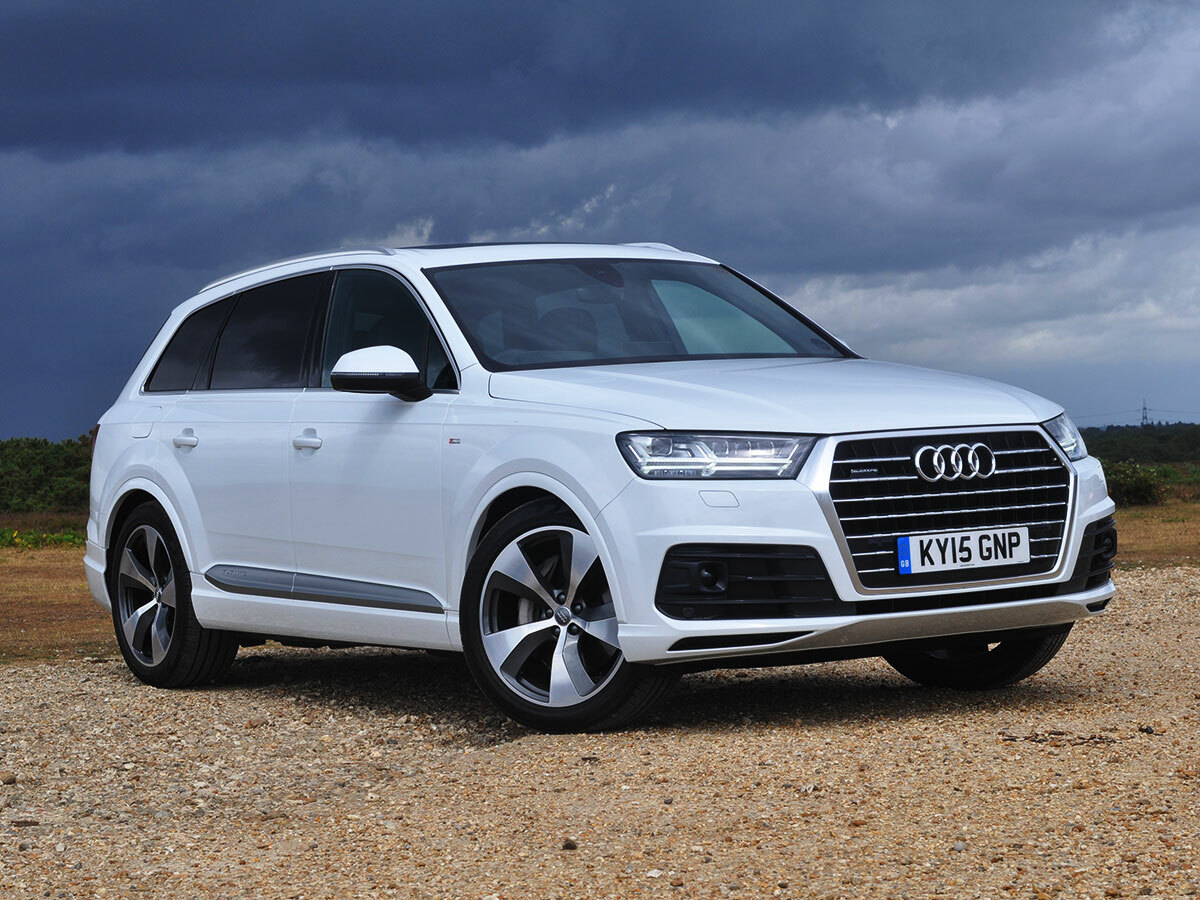
There’s nothing wrong with a little pampering, and pampering our convenience -crazed generation is what the Q7 was built for. Whether it’s the fit and finish, the driving dynamics or the practicality of the car, it’s both a path of least resistance and a genuinely indulgent experience.
How it stacks up against the competition is another matter; watch out for a full review in the near future.
Read more › Stuff’s top 10 cars

